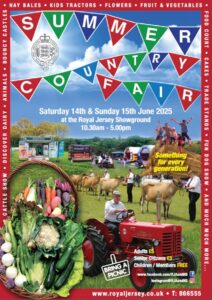
A traditional method of land management allowing cows to roam free and graze for a short period has been used on a meadow in Trinity to improve biodiversity and protect wildlife.
Le Petit Pré Site of Special Interest is owned by Trinity Manor and is managed by the Government of Jersey’s Natural Environment department. The site is valuable in terms of Jersey’s Biodiversity Strategy and is one of the few wet meadows in the Island has been unaffected by drainage works and has not been fertilised for over 25 years.
Natural Environment Officer, Julia Clively, said: ‘We have teamed up with Trinity Manor Farm and Sangan Island Conservation who are looking to promote biodiversity through a globally recognised agreement called Linking Environment and Farming (LEAF).
‘This globally recognised accreditation supports a farmer’s commitment to biodiversity and integrated farm management, so it incorporates all aspects of farming with the end goal that it is still benefiting the environment.
‘Agriculture is an integral part of biodiversity management in the Island, so I am delighted that the farmers have supported grazing this meadow. We hope that this arrangement will be ongoing, which will continue to improve the diversity of plants found in the meadow and in turn will be of great benefit to insects, birds and small mammals.’

Ecologist, Piers Sangan, said: “We had quite a large herd of cattle on the meadow, so we limited their time on it to ensure that the meadow doesn’t become overgrazed which would have adverse effects.
‘Just within the short period of time that the cows grazed the meadow, we have already seen positive improvements, including the trampling of bracken which will hamper its growth and reduce its large canopy. Additionally, the dominant grasses have been eaten and trampled so this means that other plant species will be able to grow in the meadow, supporting biodiversity.
The cows have been enjoying eating the willow which is really interesting as this plant was originally harvested for forage for our cattle historically so the fact that they’ve gone straight to that is quite fascinating.’





